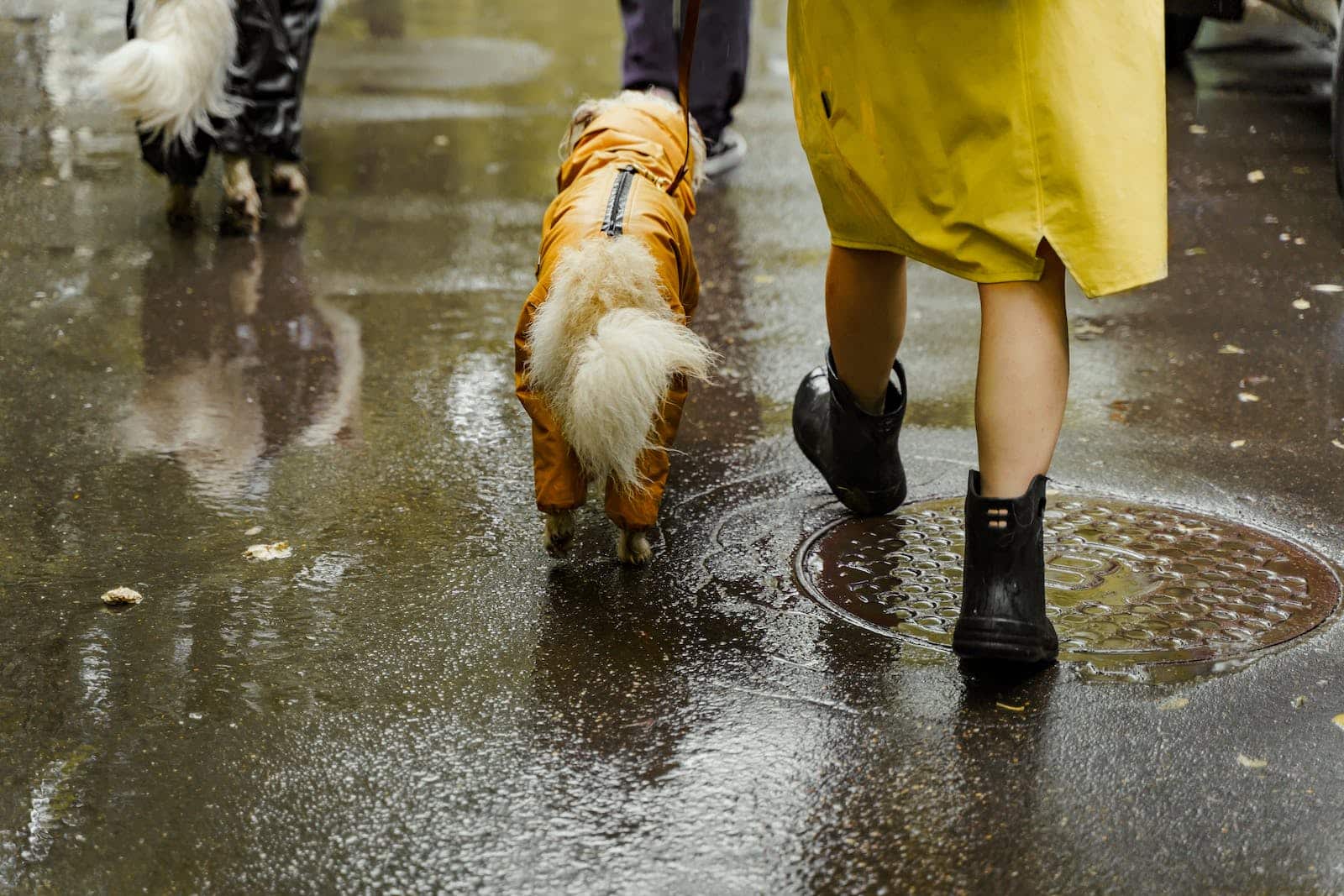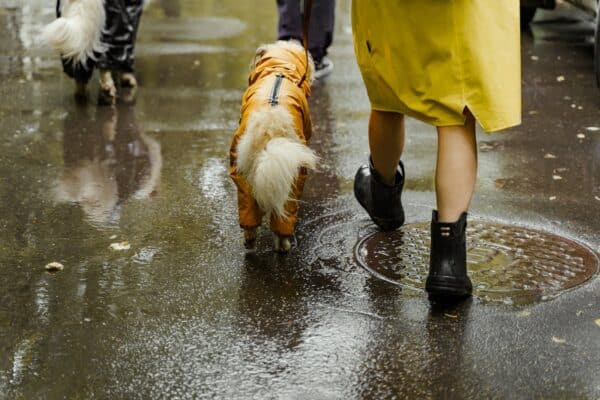Click to Skip Ahead
Not all dogs need raincoats. However, some dogs may benefit from them depending on their breed. Single-coated dogs like Boxers, Dalmatians, and Maltese don’t have a dense undercoat, making them more susceptible to the cold and wet. Therefore, they may benefit the most from an extra layer of protection when it is rainy.
Double-coated breeds have a built-in layer of insulation underneath their top coats. Their topcoat is designed to be water-resistant and protects their insulating layer from getting wet. These dogs don’t typically need a raincoat, as they are already protected from the rain.
Short-legged breeds like Corgis and Dachshunds often benefit from a raincoat, too. Their shorter legs leave them closer to the ground, so they’re more prone to getting wet and muddy. Raincoats with some underbelly protection can help keep them cleaner and drier.
Of course, there are some other factors to consider, too. Let’s take a look at them.

Factors for Determining if Your Dog Needs a Raincoat
Yes, the breed of your dog is probably the most important factor to consider when figuring out if your dog needs a raincoat or not. However, that isn’t the only thing you should consider.
Puppies, senior dogs, and sick dogs typically benefit from a raincoat more than a healthy adult dog. They can be more susceptible to the wet, cold weather. The extra protection of a raincoat can be very helpful.
If you live in a climate where it rains a lot, you may decide to get your dog a raincoat, no matter their breed or age. On the other hand, if it rarely rains where you are or remains warm for much of the year, even a short-haired dog may not need a raincoat. Can you simply avoid going outside when it rains? If you can, a raincoat may not make much sense.
Some dogs don’t like getting wet and will actively avoid using the bathroom when it rains. If you can’t build a covered potty area, a raincoat may be the next best option. Smaller dogs particularly seem to fall into this category.
On the other hand, if your dog doesn’t mind the rain, they may not need a raincoat at all.
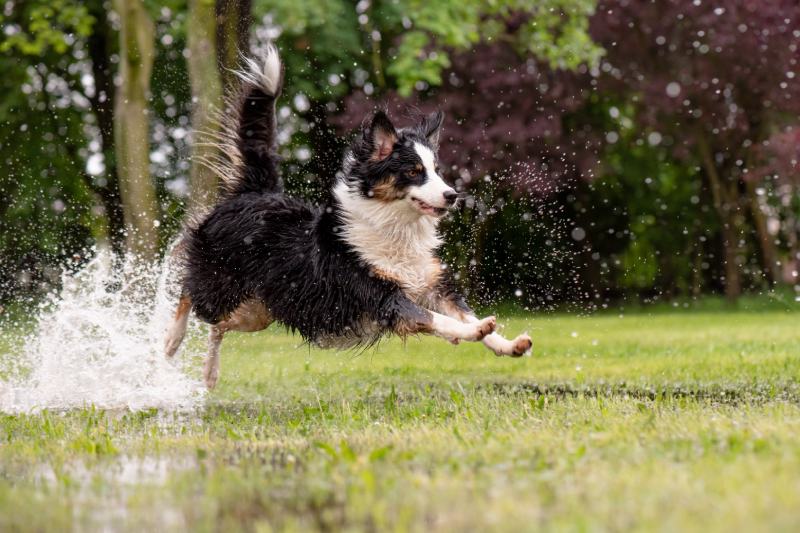
Pros of Dog Raincoats
There are several benefits to purchasing a raincoat for your dog, including:
- Comfort: Raincoats can help keep single-coated, short dogs comfortable when it is raining outside. Otherwise, these dogs may get cold and soaked pretty quickly. Just like we don’t like being cold and wet, our dogs don’t, either. Shivering and discomfort can be avoided with a raincoat.
- Cleanliness: Even if your dog doesn’t seem to mind the rain, getting them clean afterward can be a headache. Shorter dogs are especially prone to getting muddy, so having some extra layer of protection can be helpful.
- Visibility: Most dog raincoats are reflective, which helps your dog be seen when it rains. While this feature isn’t the main benefit of raincoats, it can be a helpful additive.
- Extra protection: Many raincoats also offer protection from the snow, wind, and even the sun. You don’t just need to keep raincoats for a rainy day. They can be used in all sorts of bad weather.
Cons of Dog Raincoats
Of course, not everything about doggie raincoats is great! There are some potential downsides to consider, too:
- Cost: Raincoats are an added expense you may not want to add to your dog’s care budget. For larger dogs, especially, a quality raincoat can be very expensive.
- Fit and comfort: Dogs may not like wearing clothes, even more practical clothes like a raincoat. A poorly fitting raincoat can restrict your dog’s movement, rubbing against their skin and causing all sorts of discomfort. Dogs may dislike their raincoat more than the rain itself.
- Overheating: In warmer weather, raincoats trap heat and can lead to overheating. Even if it is raining, your dog can still overheat from the raincoat. Raincoats are not breathable at all, and a dog cannot tell you when they are hot.
- Damage and wear: Active dogs can quickly rip and damage their raincoat. You may need to purchase another, which can be expensive. You cannot expect a raincoat to last forever, even if you spent $100 on it.
- Training: Dogs may require training to wear their coat without a complaint. Some dogs may always struggle to wear them, even with plenty of training.
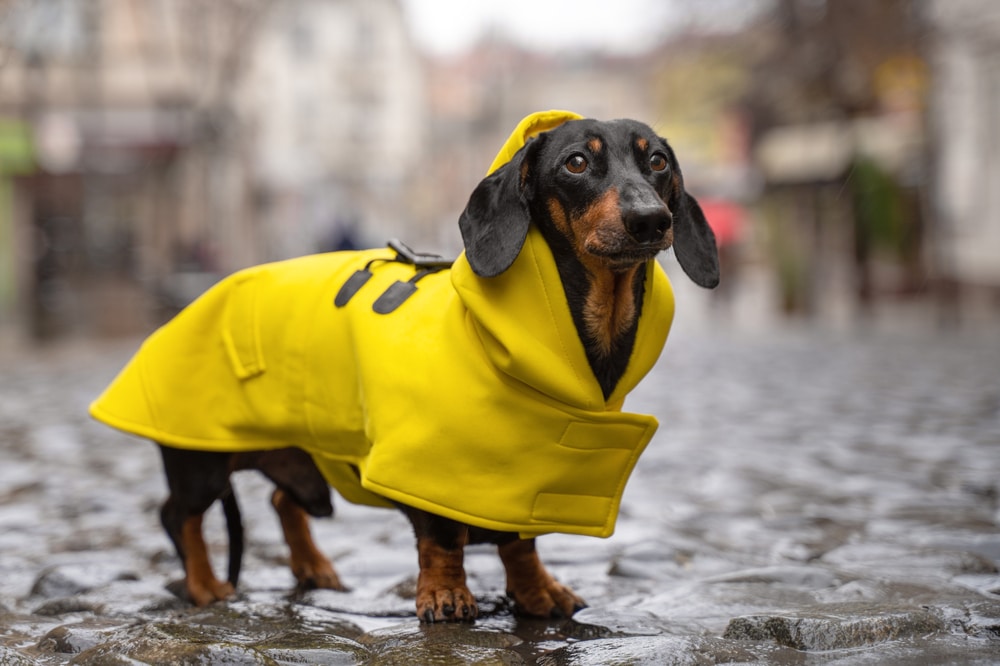
The 4 Things to Consider When Buying a Raincoat
If you do decide to get a raincoat, it’s important to buy a high-quality raincoat. Otherwise, it may not work properly, fit well, or hold up to regular activity.
1. Fit
The most important factor is fit. The raincoat must fit your dog well. A poorly fitted raincoat can be uncomfortable and cause chafing. Your dog may not even be able to walk in it correctly. The vast majority of raincoats have a sizing guide. Make sure you use it and measure your dog carefully. Make sure it fits your dog well before you expect them to wear it around. If it doesn’t fit, don’t force your dog to wear it.
2. Comfort
Your dog’s comfort is also important. You can’t ask your dog if they feel fine or not. However, you can choose a material that feels soft and comfortable. You can also keep an eye on your dog for their reaction (though many dogs will dislike wearing clothing at first).
3. Waterproofing
Of course, because it is a raincoat, waterproofing is also important. Make sure the raincoat is actually waterproof and protects your dog from getting wet. Water-resistant coats will help to some extent, but they won’t keep your dog completely dry.
4. Reflective Features
We also recommend reflective features. In a heavy rainstorm, your dog may be hard to see. Adding reflective features to the raincoat helps your dog be seen by cars (and you) a bit easier. While it doesn’t keep them dry, it does help keep them safe.
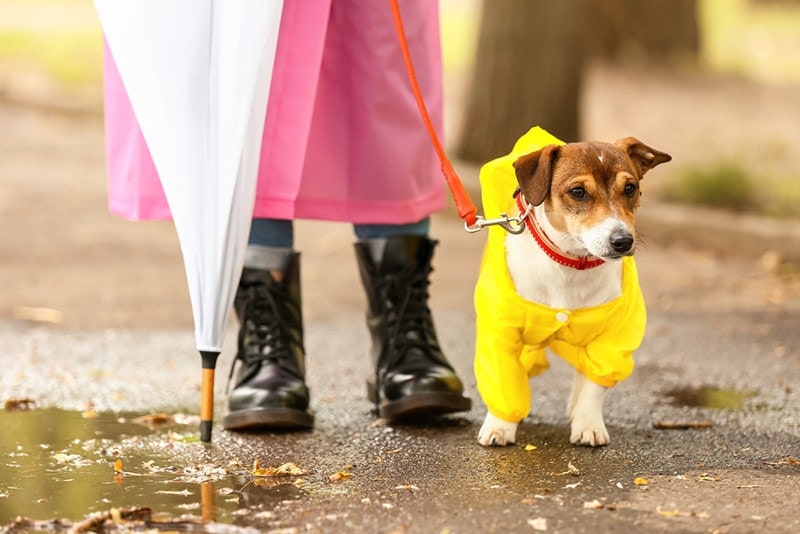
Final Thoughts
Raincoats aren’t necessary for most dogs. However, that doesn’t mean they aren’t helpful. Short-coated dogs that don’t have much protection from the rain may benefit from a raincoat, especially if they don’t like the rain. Smaller dogs often fit in this category, as they’re more prone to getting chilled than larger dogs. Short dogs also benefit, as their bellies are closer to the ground. They’re more likely to get muddy and wet.
If you do decide to get your dog a raincoat, it’s important to train them to wear it. Most dogs aren’t used to wearing clothes and will react badly to being forced into a raincoat. You can’t exactly explain that it will keep them dry, either!
Therefore, plan to do some training before you expect your dog to wear a raincoat in the rain. Some dogs may start feeling comfortable in the coat after a few days, but others may take weeks before they’ll even walk in it.
Featured Image Credit: Yaroslav Shuraev, Pexels

